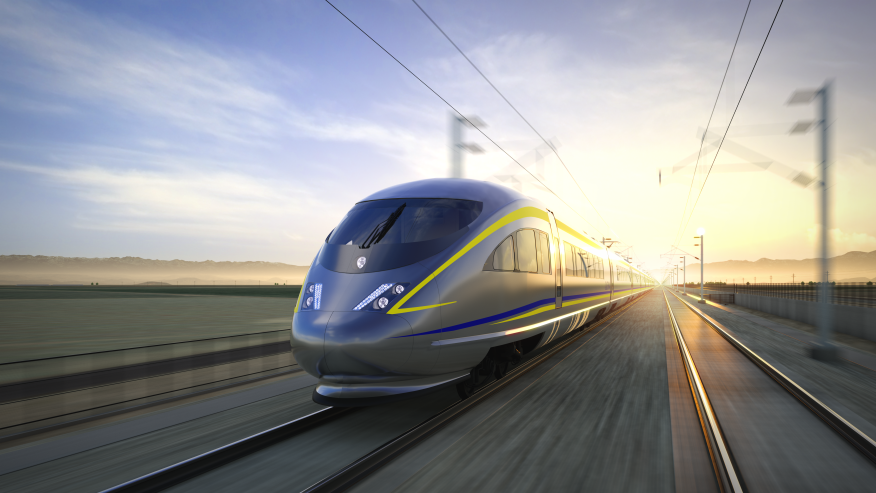The California High-Speed Rail Authority (CAHSR) has proposed an update to its planned Los Angeles-to-Anaheim rail segment, with a strategic aim of optimizing the rail system’s efficiency and effectiveness.
CAHSR recently announced its intention to introduce a fourth rail line between Los Angeles and Anaheim, enabling the independent operation of commuter rail services and freight trains, thereby eliminating the need for coordination and shared tracks within the densely populated metropolitan region.
Though conceptually minor, these adjustments are poised to yield a significant impact once the commuter train service is initiated over the coming decade.
The original proposal featured the construction of a freight facility in Colton, designed to store and maintain trains currently not in service. However, this initial plan faced resistance from Colton city officials and residents, resulting in its abandonment.
Jim Patrick, Southern California communications manager for California High-Speed Rail, explained that the Colton community protested that the plan would bring additional carbon emissions and traffic to the city without delivering any tangible benefits from the high-speed rail system. In response to the local pushback, CAHSR opted to devise a new plan.
Instead of diverting trains to Colton to free up the heavily congested corridor, CAHSR will build an additional rail line between Los Angeles and Anaheim. This approach is expected to clear the path for dormant freight trains, reducing obstructions.
Furthermore, a light maintenance facility is scheduled for construction in the Los Angeles area. The precise location remains undetermined but is likely to be situated either on the west bank of the Los Angeles River, leveraging an existing Amtrak site, or in the vicinity of the BNSF Hobart Railyard in Vernon.
The new strategy is believed to garner support from various stakeholders involved in the project, including Amtrak, Metrolink, and BNSF, the current owner of the rail lines.
This shift is expected to lead to cost savings, with the original plan carrying an estimated cost of approximately $8.97 billion, while the new plan is projected to range between $6.46 and $6.72 billion.
Regarding ownership of the new tracks, the situation is somewhat unclear. BNSF owns the right of way, and CAHSR will essentially be “borrowing” the space for both operations and track construction. The details concerning maintenance and operation rights on the fourth line are expected to be negotiated as the project progresses.
The proposed 33-mile Los Angeles-to-Anaheim segment is anticipated to offer a travel time of approximately 45 minutes. Although not reaching the initial “High-Speed” promise of the project, this segment is considered one of the most intricate and challenging sections within the entire 800-mile theoretical service area.
The dense existing infrastructure within the Los Angeles area and limited room for new construction make it a complex project. The interchanges where rail lines intersect with roads further contribute to the complexity, causing delays for trains.
The public is invited to provide input on the suggested four-track solution, and there is ample time for plan modifications, with environmental clearance anticipated to be granted by 2025.
LaDonna DiCamillo, Southern California Regional Director, will present the plan to the CAHSR Board of Directors for discussion.
It’s important to note that the Los Angeles-to-Anaheim segment is of lower priority for the California High-Speed Rail Authority at this stage, as it continues to face the daunting challenge of geotechnical work in the Palmdale-to-Burbank segment. This phase necessitates tunneling through over 30 miles of mountains, posing significant technical and financial challenges.
The momentum for the High-Speed Rail project has been gaining traction, with substantial infrastructure projects completed in the Central Valley, the allocation of a $200 million grant from the Biden Administration, and the commencement of the process to acquire new high-speed electric trainsets.
California Governor Gavin Newsom’s recent visit to China also saw discussions on clean energy and climate change initiatives, with an opportunity to experience China’s extensive high-speed rail system. The governor expressed his gratitude to President Joe Biden for supporting California’s clean energy projects and requested the approval of a pending $2.8 billion federal grant to advance the initial operating segment of the California High-Speed Rail system. This segment includes the Bakersfield-to-Merced route, scheduled to commence service around 2030, pending federal grant approval.
Should the federal grant be awarded, a portion of the funds may be utilized to initiate the geotechnical work needed for tunneling through the mountains, bringing the vision of a closer San Francisco-to-Los Angeles (and Anaheim) connection closer to realization.
